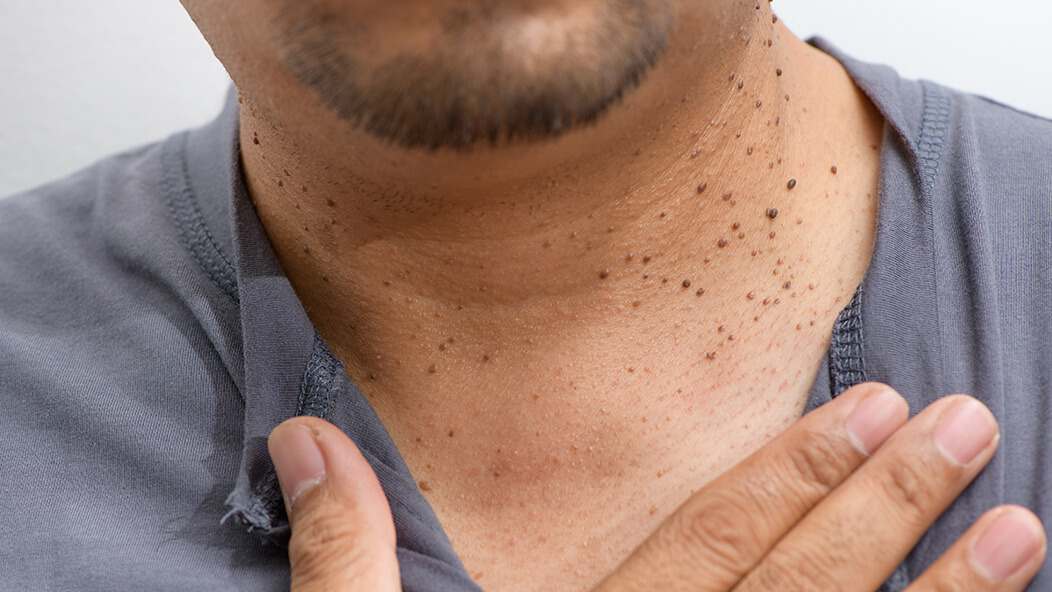Join Our eNewsletter!
Subscribe to our monthly newsletter to receive encouraging advice to help you lead a healthy lifestyle.

Why Do-It-Yourself Skin Tag Removal Isn’t Recommended
Pesky skin tags are growths on your skin that typically appear in places where skin folds. Although they won’t turn into cancer, they are annoying when they get irritated – and often unsightly. There are options for removal, if desired. Learn the ins and outs of skin tags and why home removal isn’t recommended.
Understanding skin tags
Skin tags are tiny noncancerous growths (1 to 3 mm) connected to your skin by a stalk. They are common to both men and women and more so for people over the age of 50. Experts can’t explain why they grow, but family genetics, extra body weight, and diabetes tend to be common factors for people who develop skin tags.

Removal options
Insurance usually doesn’t cover the cost of skin tag removal -- considered a cosmetic procedure – which is why some people attempt a do-it-yourself approach. Although online sources share DIY options to remove skin tags, they aren’t effective or safe to do at home. Suggestions such as tying skin tags off with a string or using a chemical peel can cause infection, bleeding, or burns. Natural home remedies such as apple cider vinegar and wart removals likewise aren’t effective. Vinegar, especially, can cause a chemical burn and permanent scaring.
The best recommendation is to rely on your dermatologist to evaluate them and offer input. These are safe options in the doctor’s office when removal is desired:
Snip it off. The physician numbs the area and snips the skin tag at the stalk. This can cause a little bleeding but is stopped with aluminum chloride.
Electrodessication. This method uses a form of cautery with electricity. After using a numbing cream on the area, each skin tag is touched with the cautery machine that causes the skin tag to shrink up for a few days and ultimately fall off. There is no pain, blood, or scarring.
Stay on top of your skin health with an annual skin check by your dermatologist. This will provide a baseline that makes it easier to see changes in your skin health each year.
Meet Our Team
Our Dermatology specialists provide services for women, men, and children at several Kelsey-Seybold Clinic locations throughout the Houston area, so you’re never far from getting treatment for your skincare issues.








